Jeonju, the culinary capital of South Korea, offers a perfect blend of history, culture, and gastronomy, making it an ideal destination for a day trip. Known for its well-preserved Hanok Village with traditional Korean houses, Jeonju is where the old world meets the new in South Korea.
The city's vibrant food scene, headlined by its famous bibimbap, offers a feast for the senses, making it a must-visit for Korean food enthusiasts. Whether you’re an avid history buff, a food lover, or simply in need of a short getaway, a trip to Jeonju has something for everyone. Below I've listed a few different options for you to choose from during your morning, aftenroon, and evening in Jeonju.
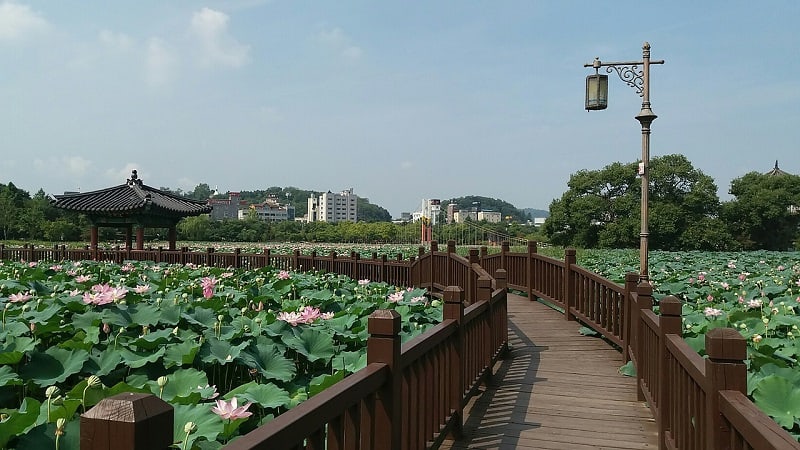
Jump to:
🌁 All About Jeonju City
Jeonju, located in northern Jeolla province in southwestern Korea, is a traveler's paradise, rich in history and natural beauty. The city features expansive plains and is close to the sea, offering great weather. Jeonju is famous for preserving hanok (traditional Korean houses), showcasing Korea's architectural past, not to mention being a great day trip from Seoul.
The city is also known for its delicious Korean dishes, hansik, making it a must-visit for food lovers. Besides its food and architecture, Jeonju is dedicated to traditional arts like hanji (Korean paper) and pansori (musical storytelling), recognized by UNESCO as culturally integral. These cultural gems provide a deep connection to Korean heritage.
🚌 Getting to Jeonju City
From Seoul to Jeonju
You can travel from Seoul to Jeonju in one of several convenient ways. For those watching their budget, the most economical way to get to Jeonju is by bus. Buses depart from the Seoul Central City Bus Terminal every 15 minutes and a ticket costs around ₩28,000.
The trip lasts approximately 2 hours and 40 minutes and brings you directly to the Jeonju Express Bus Terminal, making it both affordable and straightforward. If time is of the essence, hopping on the KTX train might be your best bet.
The fastest route involves taking the train via Iksan Station, which takes 1 hour and 47 minutes. A direct train service from Yongsan Station in Seoul also delivers you to Jeonju Station in about 2 hours and 22 minutes. Trains run hourly and offer a comfortable and swift journey, allowing you to enjoy more time in Jeonju.
From Busan to Jeonju
Navigating from Busan to Jeonju is also quite straightforward, with several transportation options for different schedules and budgets. For those looking to save money, the most budget-friendly way is to take a bus. A ticket costs around ₩35,000, and buses run hourly from Busan stations to the Jeonju Express Bus Terminal, ensuring a convenient departure time is always available.
The journey takes roughly 3 hours, allowing you to sit back, relax, and enjoy the scenic Korean countryside. This option is particularly appealing for those seeking a balance between cost and ease of travel, though driving is the quickest way for travelers to reach Jeonju from Busan.
The journey by car spans approximately 250 kilometers and takes around 2 hours and 39 minutes, provided favorable traffic conditions. While there's no direct train service between Busan and Jeonju, you can still opt for a train journey by transferring via Osong Station.
This option, including all transfers, will take about 3 hours and 33 minutes. Though it involves more planning, taking the train can offer a comfortable and scenic route, making the trip an integral part of your travel experience.
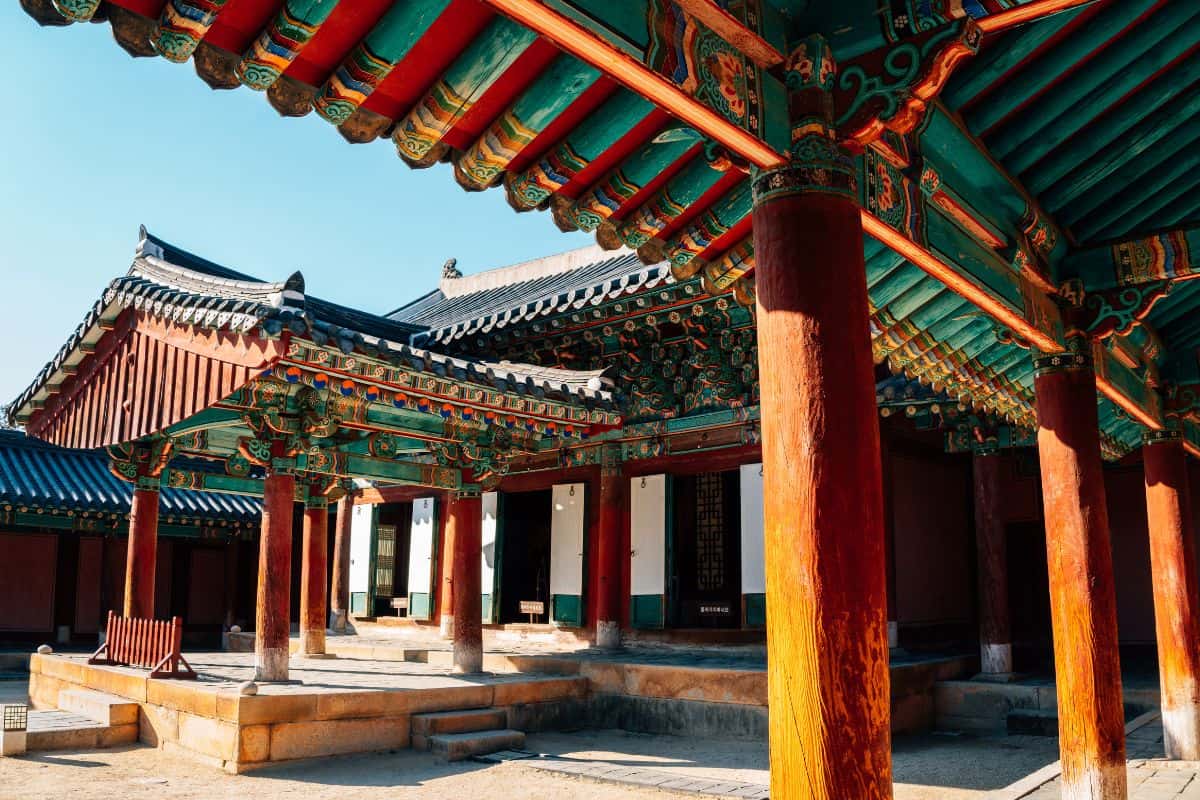
🏙️ Morning Itinerary
For Cultural Exploration: Gyeonggijeon Shrine
Hours: 9am-6pm, Monday to Sunday
Your first stop will be the Gyeonggijeon Shrine. Its beautiful, tranquil atmosphere makes it a perfect spot to start your day trip. Gyeonggijeon Shrine in Jeonju is a significant historical site. Built around 1410 and renamed in 1442, it houses the portrait of King Taejo, the founder of the Joseon Dynasty.
Though it burned down in 1597, it was rebuilt in 1614 and repaired in 1872. The King's portrait, now Treasure No. 931, highlights Korea's royal heritage. Architecturally, the shrine features a mid-Joseon style with a five-beam Main Hall, a gabled roof, and double eaves.
The façade has an open ceremonial pavilion, and the hall is supported by round columns on granite bases; its carved ceiling adds to its charm. Paths lined with columns and incense burners lead to the main structure, creating a peaceful and sacred atmosphere.
Address: 102, Pungnam-dong 3-ga, Wansan-gu, Jeonju, Jeollabuk-do
Closest Metro: Jeonju Express Bus Terminal Station
Hours to Spend: 1-2 hours
For Walking: Jeonju Hanok Village
Hours: 24 hours, 7 days a week
Alternatively is the famous Jeonju Hanok Village, Korea's largest traditional hanok village, with over 700 hanoks and hanok stays in Jeonju's Pungnam-dong area. It's the only hanok neighborhood in a modern city, blending historical charm with urban convenience.
Visitors can explore Korea's cultural heritage dating back to 1910. The village is a lively community preserving traditional Korean living while showcasing modern housing. Jeonju Hanok Village hosts around 20 cultural sites, like Omokdae and Hyanggyo, resulting in one of the most beautiful places in Korea.
It integrates various Korean traditions, including hanji (paper), pansori (musical storytelling), hanbok (clothing), Jeonju food, and oriental medicine. Whether you're into culture, food, or unique experiences, Jeonju Hanok Village has something for everyone, ensuring a memorable daytrip to Jeonju.
Address: 99 Girin-daero, Wansan-gu, Jeonju-si, Jeollabuk-do, South Korea
Closest Metro: Jeonju Station
Hours to Spend: 1-2 hours
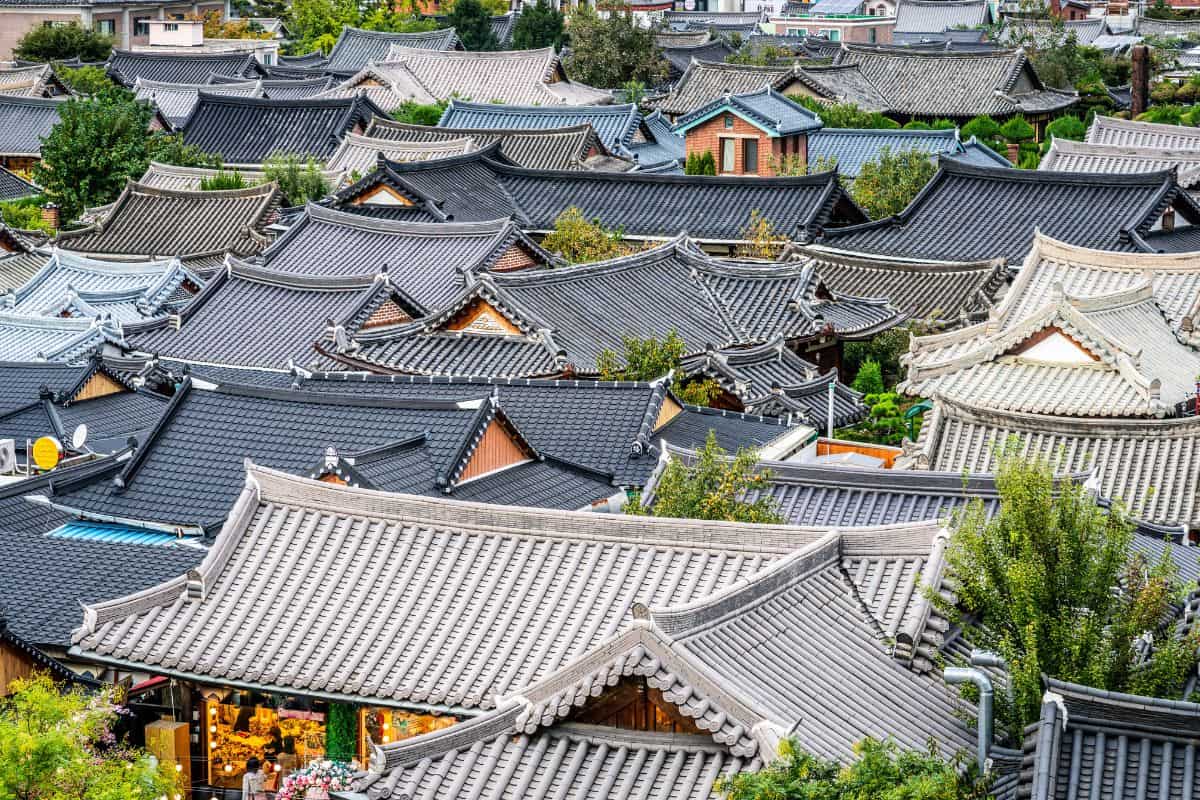
🌇 Afternoon Itinerary
For Kids: Jeonju Crafts Exhibition Center
Hours: 10am-6pm, Tuesday to Sunday
After a traditional Korean lunch at one of the many restaurants in Jeonju Hanok Village, head to the Jeonju Crafts Exhibition Center for a cultural experience and to explore the beauty and history of traditional Korean crafts. The center has 3 main areas: the Craft Hall, the Special Exhibition Hall, and the Experience Hall.
The Craft Hall displays a permanent collection of expertly made items, showcasing their elegance and skill. The Special Exhibition Hall features changing exhibits, so there's always something new to see, though for a hands-on experience you can visit the Experience Hal, where you can join interactive workshops and learn to make your own crafts with help from skilled artisans.
Try your hand at mulberry paper making, pottery, woodwork, or embroidery. Before you leave, stop by the craft shop to buy lovely Korean souvenirs so you can take a piece of Jeonju’s heritage home with you.
Address: 15 Taejo-ro, Wansan-gu, Jeonju-si, Jeollabuk-do, South Korea
Closest Metro: Haengsin Station
Hours to Spend: 1-2 hours
Jaman Mural Village
Hours: 24 hours a day, 7 days a week
Jaman Mural Village, on the ridge between Omokdae and Imokdae at the base of Seungamsan Mountain, offers a colorful detour from Jeonju Hanok Village. As you climb the steep path, you'll see murals on buildings and walls, each with its own story.
The main street gives clear views of Jeonju Hanok Village below, blending old and new. Jaman-dong was once home to the Joseon Dynasty’s royal family, making it a historic and once-restricted area, while now Jaman Mural Village contrasts with its neighbor, Jeonju Hanok Village.
Over the years it's turned from a quiet neighborhood into a lively spot with quirky Korean cafés, interesting venues, and a bevy of photo opportunities. The murals show the community’s vibrant culture, making it great for art and history lovers. Whether taking photos, enjoying coffee in a café, or soaking in the art, Jaman Mural Village adds a unique touch to your Jeonju itinerary.
Address: 한옥레일바이크, Jeonju, Jeollabuk-do, South Korea
Closest Metro: None
Hours to Spend: 2-3 hours
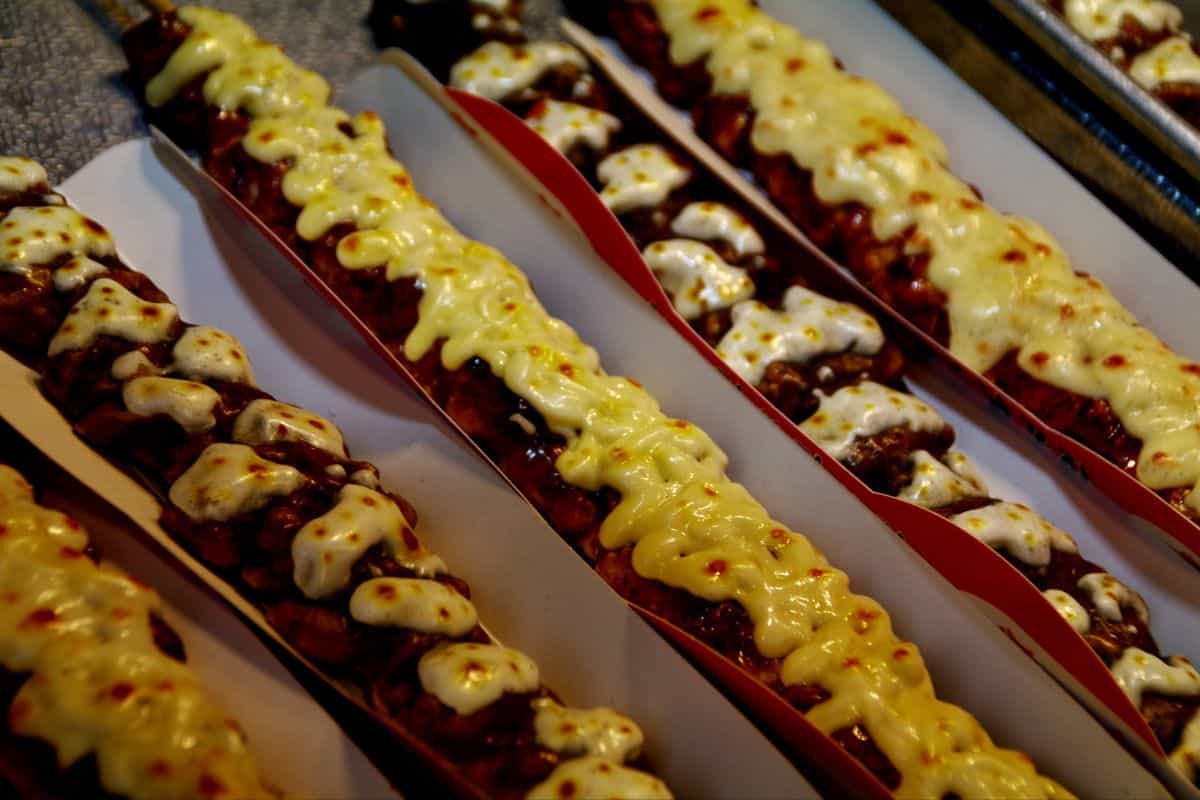
For Buddhist Culture: Jeonju Hyanggyo
Hours: 9am-6pm, Tuesday to Sunday
Jeonjuhyanggyo in Jeonju is a key cultural site showcasing Korea’s educational history. Built during the Joseon Dynasty (1392-1910), this Confucian school is a Historic Treasure. It was a national education center during the Joseon period that promoted learning and Confucian values. Relocated to its current spot in 1603, it offers a peaceful, historic setting.
The main building, Daeseongjeon Hall, holds the memorial tablets of 7 notable Chinese Confucian scholars and 18 important Korean scholars, showing the era's respect for Confucian teachings. Visitors can explore the calm courtyards and preserved buildings, getting a feel for the school's scholarly past and a unique look into Korea’s academic and philosophical traditions.
Address: 139 Hyanggyo-gil, Wansan-gu, Jeonju-si, Jeollabuk-do, South Korea
Closest Metro: Jeonju Station
Hours to Spend: 1-2 hours
For Korean Catholicism: Jeondong Cathedral
Hours: depending on the mass schedule
Jeondong Catholic Cathedral, located in Jeonju, stands as a symbol of faith and strength. It marks the site where Roman Catholic martyrs of the Joseon dynasty gave their lives. The land was acquired by French Priest Baudenet in 1891, during King Gojong's reign.
Construction began on the cathedral in 1908 and finished in 1914 under Japanese rule. Initially near Pungnammun Gate, the church was moved to its current location to allow for growth. The cathedral offers a unique blend of history and spirituality, while architecturally, Jeondong Catholic Cathedral is admired as one of Korea's most beautiful churches.
Built from gray and red bricks, it resembles Myeongdong Cathedral in Seoul, both designed by Priest Poinel. Some bricks were taken from Jeonjueupseong Walled Town, showing the city's change over time. Visiting Jeondong Catholic Cathedral in Jeonju offers a rich experience, merging stunning architecture with deep historical and spiritual meaning.
Address: 51 Taejo-ro, Wansan-gu, Jeonju-si, Jeollabuk-do, South Korea
Closest Metro: Central City Terminal
Hours to Spend: 1-2 hours
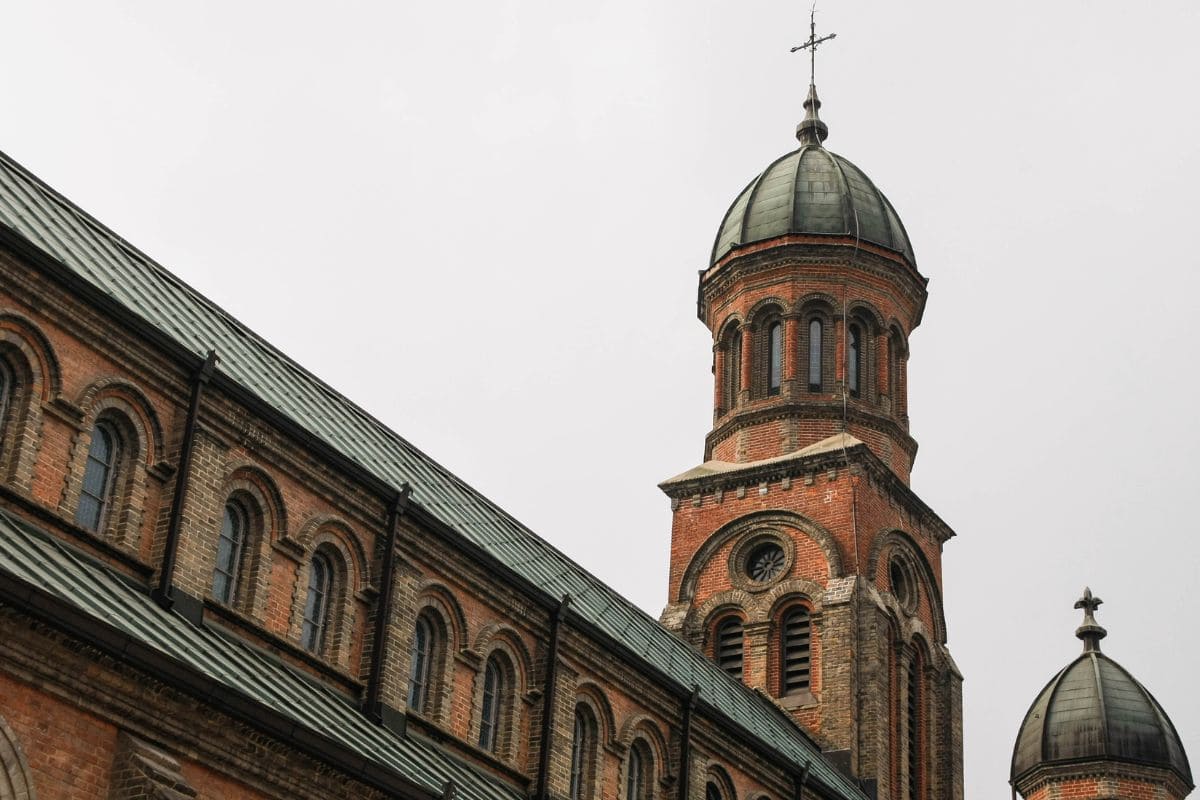
🌃 Evening Itinerary
For History Buffs: Dong-Gosa Temple
Hours: no specific hours
Donggosa Temple is a great spot to end your Jeonju day trip. Recognizable by the large white statue of Lord Maitreya Buddha, this Korean temple offers stunning sunset and night views. You can hike or drive to enjoy the breathtaking sights of Jeonju, especially as the sun sets. Evening visits are equally impressive, making it worth a post-dinner stop.
First explore the temple grounds with its shrines and traditional buildings, then you can visit the National Intangible Heritage Center, Jeonju Hanbyuk Cultural Center, and Jeonju Eco Museum, which are all nearby. Whether you love photography and culture or just want a calm retreat, Donggosa gives you a unique view of Jeonju's heritage and tranquility.
Address: 산10-88 Gyo-dong, Wansan-gu, Jeonju-si, Jeollabuk-do, South Korea
Closest Metro: none
Hours to Spend: 1-2 hours
For Peace: Hanbyeokdang Pavilion
Hours: 24 hours a day, 7 days a week
Located in eastern Jeonju, Hanbyeokdang Pavilion sits on a steep rock at the base of Mt. Seungamsan, offering a scenic retreat. Recognized as Tangible Heritage No. 15, it provides sweeping views of Jeonjucheon Stream and Mt. Namgosan.
The pavilion immerses visitors in the soothing sounds of flowing water, and the clear stream adds to the peaceful vibe, making it perfect for quiet reflection and exploration. Visitors to Hanbyeokdang Pavilion can expect more than just beautiful views; the location offers a unique sense of refreshment, as the clean water of the Jeonjucheon Stream below the pavilion creates a calm atmosphere.
Address: 15 Gyo-dong, Wansan-gu, Jeonju-si, Jeollabuk-do, South Korea
Closest Metro: Jeonju Station
Hours to Spend: 1-2 hours
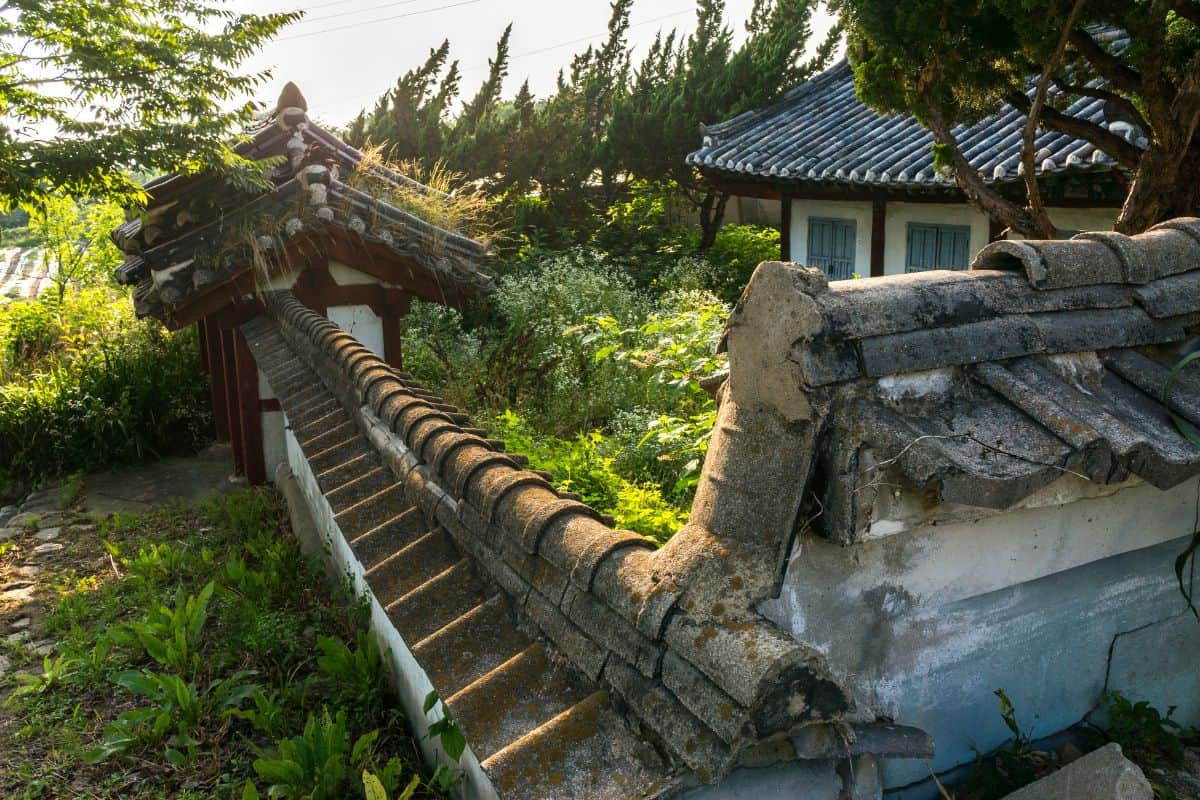
For Foodies: Nambu Market
Hours: 6am-10pm, Monday to Sunday
Visiting Jeonju Nambu Traditional Market feels like a trip back in time with modern comforts. Established in 1905 on the former site of Nammunbakk Market, it now has around 800 stores and 1,200 workers. Here you'll find everything from fresh produce and dried fish to furniture and silk.
On the second floor of 6-dong, the Youth Market adds a modern touch with young entrepreneurs running cafés and craft shops. The market is most lively on Friday and Saturday nights with its popular night market, offering delicious foods like mung bean pancakes and fusion dishes like bibimbap in rice paper. Nambu Market is a must-visit for a mix of old and new in Jeonju.
Address: 19-3 Pungnammun 1-gil, Wansan-gu, Jeonju-si, Jeollabuk-do, South Korea
Closest Metro: Nambu Bus Terminal Station
Hours to Spend: 2-3 hours
For an Evening Out: Gaeksa
Hours: none specified
Gaeksa, a trendy neighborhood named after a former government office in Jeonju, offers a mix of history and modern attractions. The main highlight is Jeonju Pungpaejigwan, a traditional building with historical importance. You can explore this gem for free and learn about its rich history.
Around it, you'll find shops, restaurants, bars, and cafés, and then you can walk through the area to find a mix of modern boutiques and traditional markets offering something for everyone. As evening falls, Gaeksa becomes even more lively and has an even larger number of entertainment options.
After dinner, try traditional Korean desserts or visit local bars for soju cocktails and other drinks. A night out in Gaeksa is a great way to experience modern Korean culture with a touch of history - whether you love food, shopping, or just want to enjoy the vibe, Gaeksa promises a fun and memorable time.
Address: 181 Gosa-dong, Wansan-gu, Jeonju, Jeollabuk-do, South Korea
Closest Metro: Jeonju Station
Hours to Spend: 1-2 hours
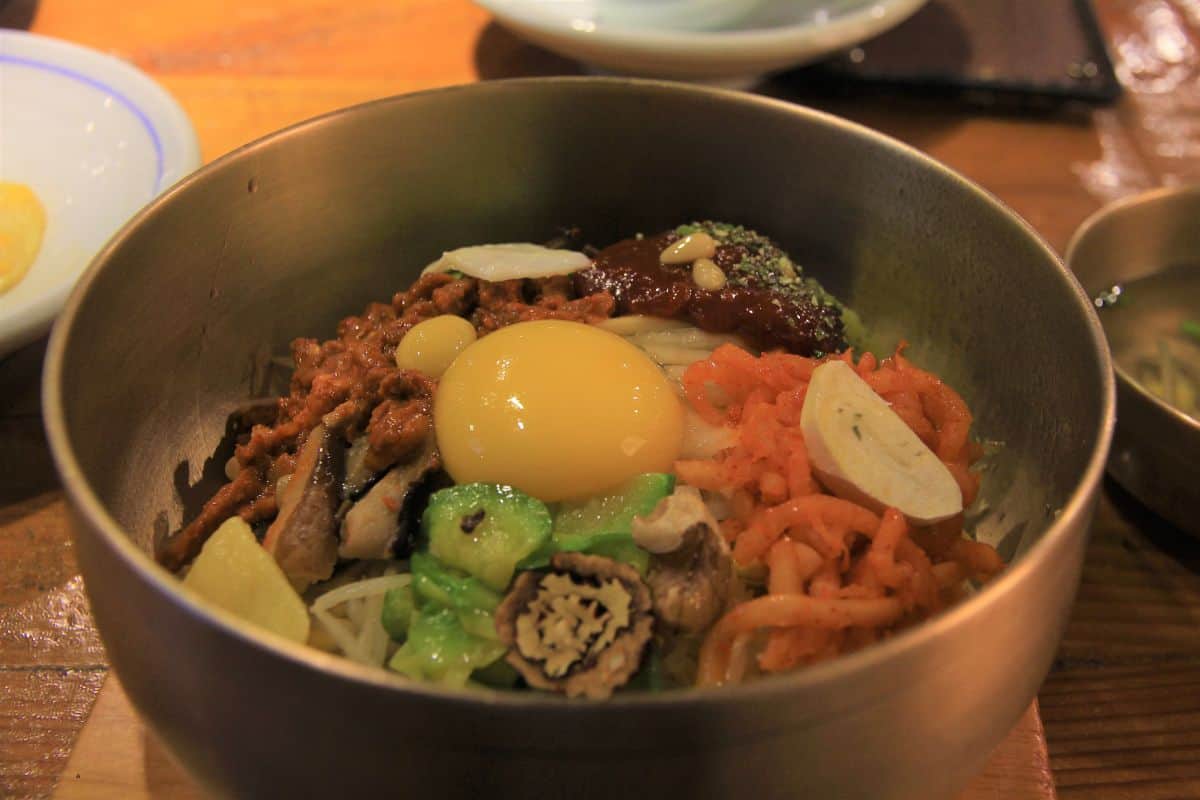
❓ Frequently Asked Questions
Yes. Jeonju is a great destination for a day trip from Seoul. It offers a variety of cultural, historical, and natural attractions that can be easily explored in one long day.
2 days and 1 night is usually enough time to see the main attractions in Jeonju, and better than a single day, if you can swing it. However, if you want to fully immerse yourself in the city and try all of its famous dishes, three full days would be ideal.
Like the rest of Korea, April, May, September, and October are the best months to visit Jeonju. The weather is mild and pleasant, making it comfortable for outdoor activities in Jeonju and exploring the city.
Jeonju is famous for its traditional Korean culture, food, architecture, and historical sites. It's also the birthplace of the popular dish bibimbap, and the home of a beautiful traditional hanok village.

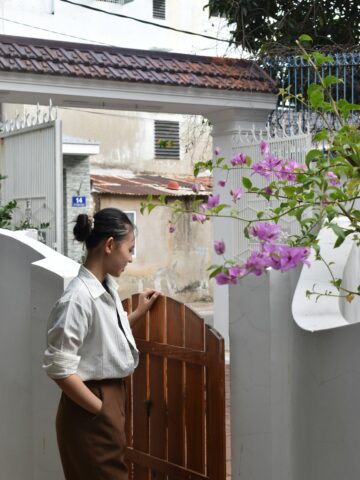
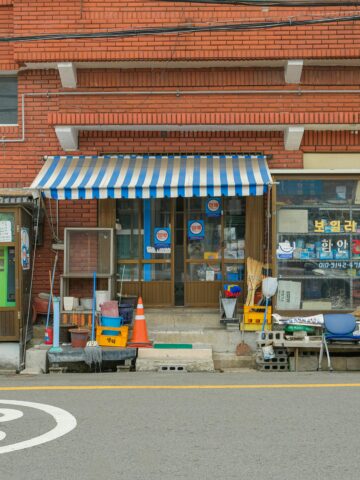
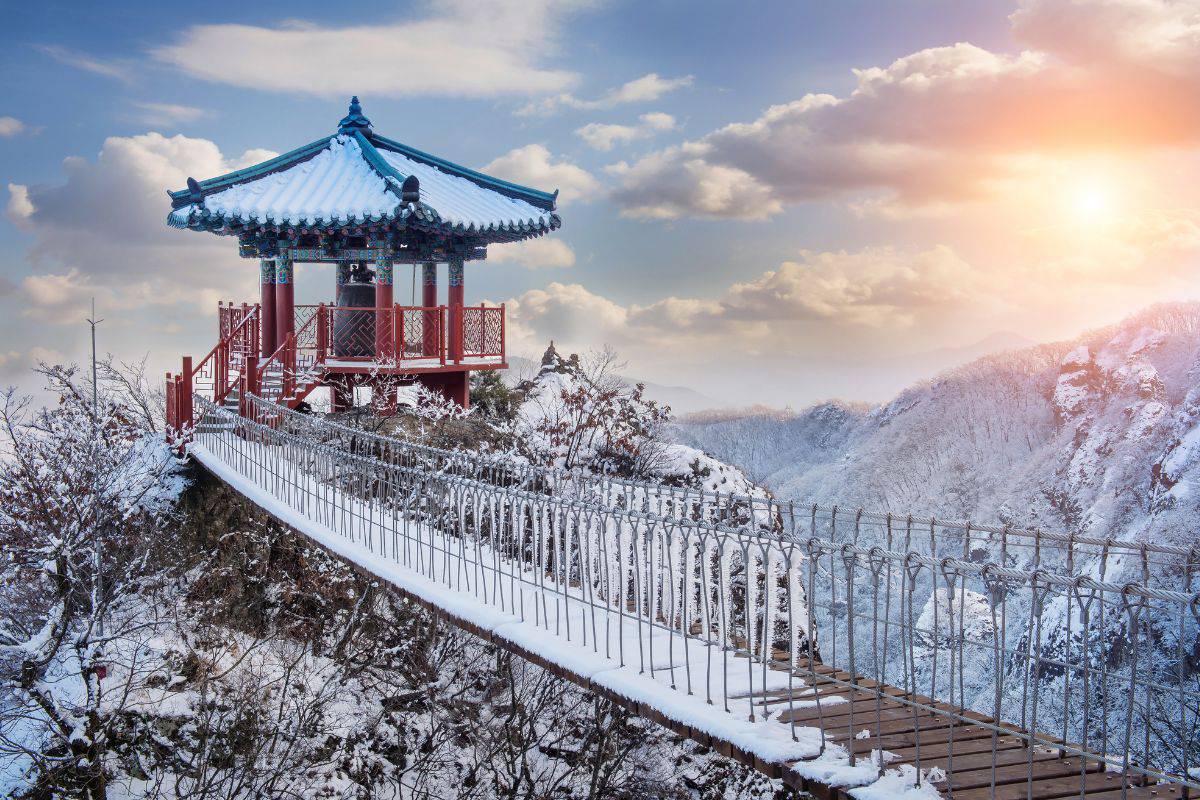
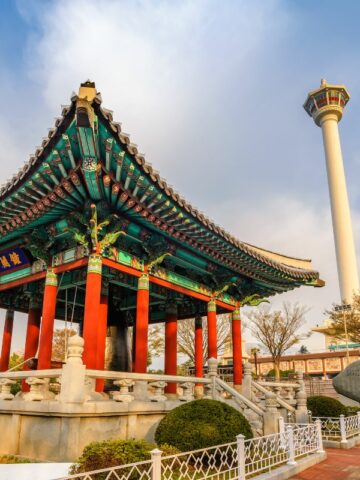
Comments
No Comments